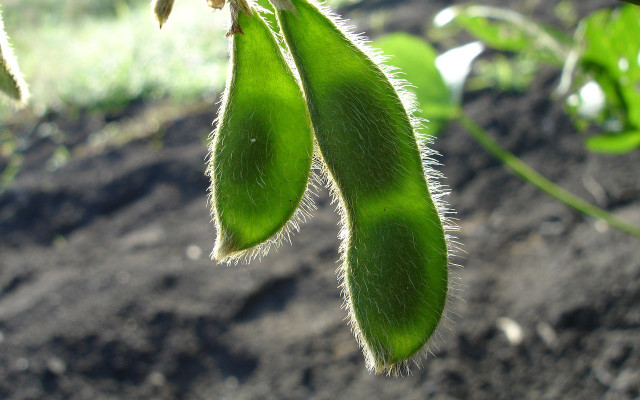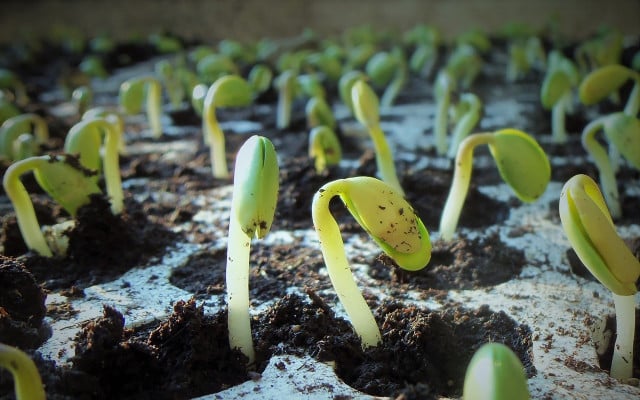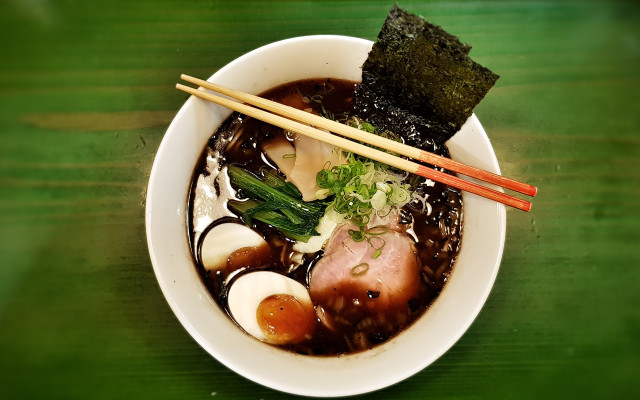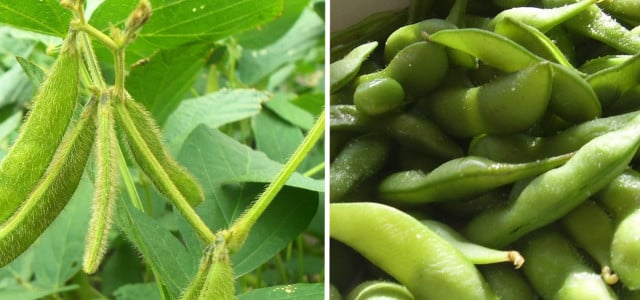Edamame beans are soybeans harvested before becoming fully mature. Utopia will show you what counts when it comes to buying edamame, nutrition, how to grow it yourself and how to prepare a simple recipe here.
Edamame literally means “stembean” as the beans were often sold while still attached to the stem. These green vegetable soya beans are often referred to as a superfood due to their high protein and fiber content. Sadly, edamame often exert a high carbon footprint due to long transportation routes and the deforestation needed to accommodate additional soybean plantations.
Edamame Beans and Nutrition: Low Carb and High protein

Edamame beans are not only an excellent source of protein, but also of nine essential amino acids that your body cannot produce on its own: histidine, isoleucine, leucine, lysine, methionine, phenylalanine, threonine, tryptophan and valine.
Nutritional values of 100 g / 3,5 oz. of edamame beans:
- 125 cal
- 12 g protein
- 13 g carbohydrates
- 4 g fat
This makes Edamame a filling snack and perfect for a low-carb diet.
Buying Edamame: What Should I look for?
In many areas, edamame is only available in Asian supermarkets, but many organic supermarkets or health food stores also offer edamame. Edamame are usually found in the freezer aisle, as they are mainly cultivated in southeast Asia, then flash-frozen to preserve their nutrients during transport.
This brings us to edamame’s main drawback: its substantial environmental impact. This booming green pod superfood is often criticized for the massive amounts of energy required to ship it thousands of miles from the field to your table. This is in addition to a number of further ecological consequences:
- Many square kilometres of rainforest fall victim to global soy production, even though the majority of soy cultivation is intended for meat production.
- According to World Wide Fund for Nature (WWF), 1,800 litres (475 gallons) of water are consumed in the cultivation of one kilogram (2.2 pounds) of imported soybeans. The “water footprint” of soy is more than 8 times higher when used for meat production.
- Additionally, chemicals used in conventional agriculture have a significant impact on the environment.
To help ensure that your edamame are not involved in this environmental destruction, pay attention to organic labelling and – most importantly – place of origin. If you can not find regional products at the store, try to not buy edamame beans regularly. Or: Plant them yourself.
Grow your own Edamame



Even though soybeans for Edamame are mainly grown in Asia, they can be cultivated in a variety of climates. As soon as the overnight temperature in your area reliably exceeds 10ºC (50ºF), you can start planting soybeans in your own garden.
Getting Started:
- Make a furrow about one to two inches deep.
- Put a soybean in it every two inches.
- Cover the beans with soil, and gently compact it.
- Keep the soil moist until the plants emerge, then water only when dry.
- Consider barriers to protect against birds and rabbits.
As a rule of thumb, you can begin harvesting about two months after sowing. Consider planting a few edamame plants every week or two to enjoy fresh edamame beans throughout the harvest season. Since edamame are immature soybeans, you should be careful to harvest them when they are still green and have fine hairs.
Edamame Recipe: Tasty snack or side dish



Edamame beans are usually eaten as an appetizer, snack, or side dish. The preparation is very simple. This edamame recipe will only take a few minutes:
- Boil the immature soybeans in their pods in salted water for five minutes, allowing them to remain slightly crunchy.
- Remove the pods from the water and sprinkle them with coarse sea salt. The pods must still be wet so that the salt will stick to them.
- Lend them a bit of added flavor by adding chili and lime juice or sesame oil and Tabasco. A mixture of sesame oil, lime juice and soy sauce is also delicious.
- While the whole soybean pod is cooked, only the beans inside are eaten. To do that, you must squeeze the beans to release them from the pod. Many people suck the beans out of the pod- one more reason to buy organic!
Interested in healthy and sustainable eating? Check us out on social media for more tips and tricks.
Read more:
- Avocado Benefits: How Healthy is this Trending Superfood?
- Take a Break: 6 Healthy Lunch Ideas
- Healthy Inca Grain? 9 Things you need to know about Quinoa
This article was translated from German into English. You can view the original here: Edamame kaufen, anbauen, zubereiten: Was du über Sojabohnen wissen musst.
** Links to retailers marked with ** or underlined orange are partially partner links: If you buy here, you actively support Utopia.org, because we will receive a small part of the sales proceeds. More info.Do you like this post?







